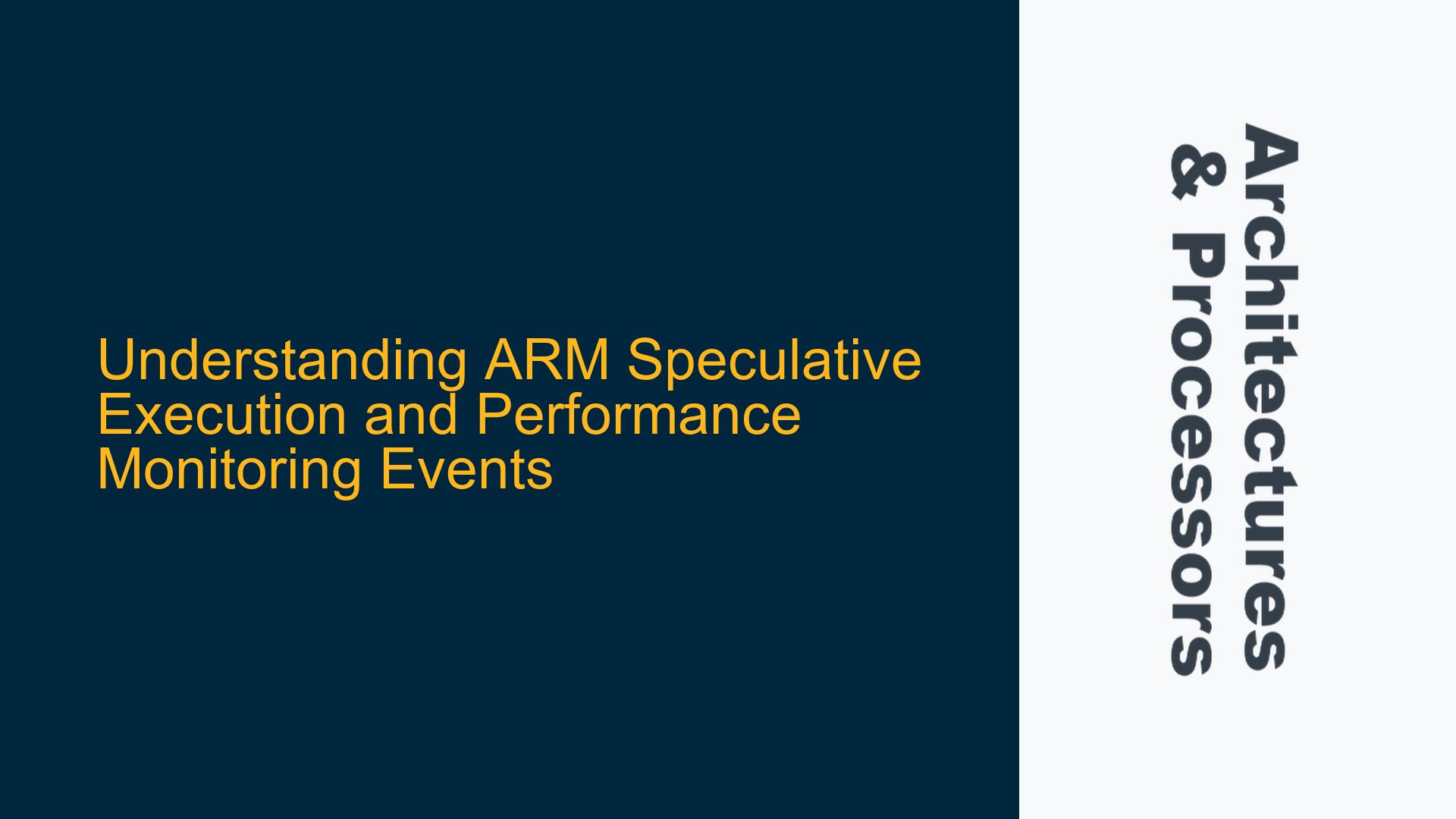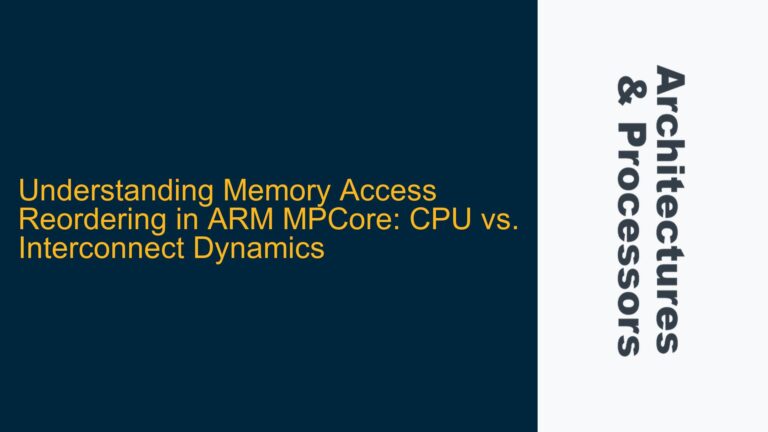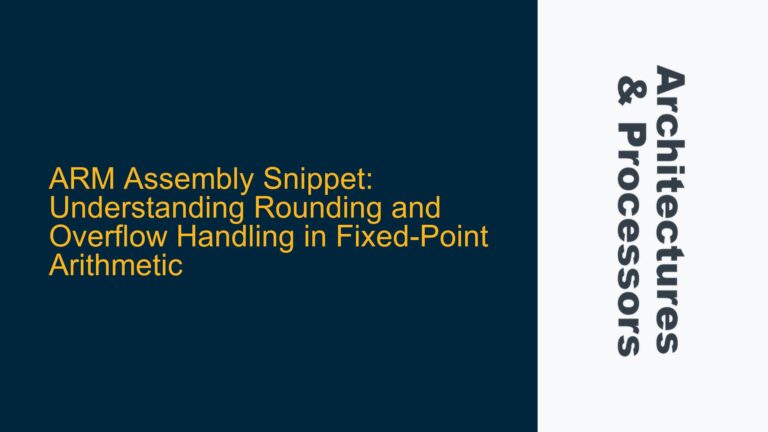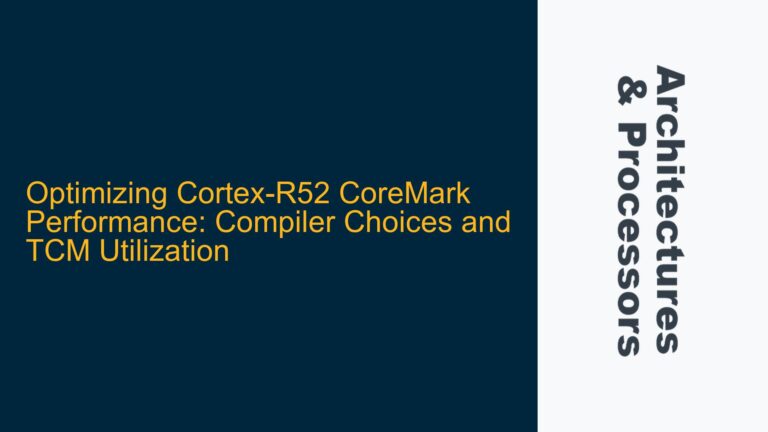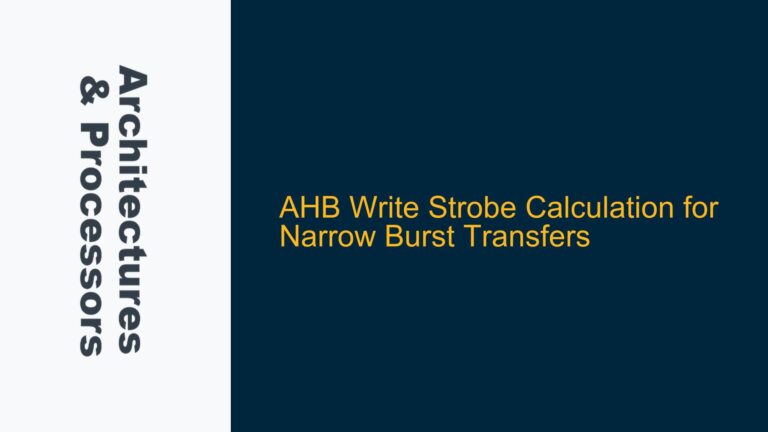ARM Cortex Performance Monitors: Speculative Execution Event Ambiguity
The ARM Architecture Reference Manual (ARM ARM) introduces the concept of "Speculatively executed" instructions in the context of Performance Monitors Extension. The manual defines a speculatively executed instruction as one that might be speculative, and this definition is tied to events such as INST_SPEC. However, the term "might" introduces ambiguity, particularly when trying to interpret what these events actually count. For instance, does the INST_SPEC event count all instructions issued by the processor, or only those that are speculatively executed? This ambiguity can lead to confusion when analyzing performance metrics, especially in deeply pipelined and out-of-order execution architectures like ARM Cortex-M4, Cortex-A53, or Cortex-A72.
From a microarchitectural perspective, speculative execution is a critical optimization technique used to improve instruction throughput. The processor predicts the outcome of branches and executes instructions ahead of time, discarding the results if the prediction is incorrect. This behavior is inherently tied to performance monitoring events like INST_SPEC, which aim to provide visibility into how often the processor is speculating. However, the lack of a precise definition for what constitutes a "speculative" instruction in the ARM ARM makes it challenging to interpret these events accurately.
To fully understand the implications of speculative execution events, it is essential to delve into the microarchitectural details of ARM cores. For example, in the Cortex-A72, speculative execution involves fetching and decoding instructions from predicted branch paths, executing them, and holding their results in a reorder buffer until the branch is resolved. If the branch prediction is correct, the results are committed; if not, they are discarded. The INST_SPEC event could be counting these fetched and decoded instructions, but it is unclear whether it includes only those that are eventually discarded or all instructions in the speculative path.
This ambiguity is further compounded by the fact that different ARM cores may implement speculative execution differently. For instance, the Cortex-M4, being a simpler in-order execution core, may have a more limited scope of speculative execution compared to the Cortex-A72. Therefore, the interpretation of INST_SPEC events may vary across cores, making it difficult to draw universal conclusions from performance monitoring data.
Microarchitectural Behavior and Speculative Execution Event Interpretation
The ambiguity in the definition of speculative execution events like INST_SPEC stems from the complex interplay between the processor’s microarchitectural behavior and the performance monitoring infrastructure. To understand the possible causes of this ambiguity, it is necessary to explore the microarchitectural mechanisms that underpin speculative execution and how they are reflected in performance monitoring events.
One possible cause of the ambiguity is the lack of a clear distinction between "issued" and "speculatively executed" instructions in the ARM ARM. In many ARM cores, instructions are first fetched, decoded, and then issued to execution units. Speculative execution occurs when instructions from predicted branch paths are issued before the branch outcome is known. However, the ARM ARM does not explicitly state whether INST_SPEC counts all issued instructions or only those that are speculatively executed. This lack of clarity can lead to misinterpretation of performance data, especially when trying to correlate INST_SPEC events with other performance metrics like branch mispredictions.
Another potential cause is the variability in how different ARM cores handle speculative execution. For example, the Cortex-A72, with its deep out-of-order execution pipeline, may have a more aggressive speculative execution mechanism compared to the Cortex-M4, which uses a simpler in-order pipeline. This variability means that the INST_SPEC event may capture different behaviors depending on the core being used. In the Cortex-A72, INST_SPEC might include a wide range of speculatively executed instructions, while in the Cortex-M4, it might only include a subset of such instructions.
Additionally, the timing of when speculative execution events are counted can also contribute to the ambiguity. In some cores, speculative execution events might be counted at the point of instruction issue, while in others, they might be counted at the point of instruction retirement. This timing difference can lead to discrepancies in how INST_SPEC events are interpreted, particularly when comparing performance data across different cores or configurations.
Finally, the interaction between speculative execution and other microarchitectural features, such as cache prefetching and branch prediction, can further complicate the interpretation of INST_SPEC events. For instance, if a cache prefetch operation is triggered by a speculatively executed load instruction, it is unclear whether this prefetch operation would be counted as part of the INST_SPEC event. This interaction adds another layer of complexity to the already ambiguous definition of speculative execution events.
Clarifying Speculative Execution Events Through Microbenchmarking and ARM Documentation
To address the ambiguity surrounding speculative execution events like INST_SPEC, a systematic approach involving microbenchmarking and careful analysis of ARM documentation is required. This approach can help clarify the behavior of these events and provide a more accurate interpretation of performance monitoring data.
The first step in this process is to conduct microbenchmarking experiments on the target ARM core. These experiments should be designed to isolate and measure the behavior of speculative execution under controlled conditions. For example, a microbenchmark could be created to execute a sequence of branches with known outcomes, allowing the processor to speculate on the branch paths. By monitoring the INST_SPEC event during these experiments, it is possible to determine whether the event counts all issued instructions or only those that are speculatively executed.
In addition to microbenchmarking, a thorough review of the ARM documentation is essential. While the ARM ARM provides a high-level definition of speculative execution events, more detailed information can often be found in the Technical Reference Manual (TRM) for specific ARM cores. The TRM typically includes detailed descriptions of the performance monitoring events supported by the core, along with their exact behavior and counting mechanisms. By cross-referencing the ARM ARM with the TRM, it is possible to gain a deeper understanding of how speculative execution events are implemented and counted.
Another important aspect of clarifying speculative execution events is to consider the impact of different processor configurations. For example, enabling or disabling features like branch prediction, cache prefetching, and out-of-order execution can significantly affect the behavior of speculative execution events. By experimenting with different configurations and monitoring the INST_SPEC event, it is possible to identify how these features influence the counting of speculative instructions.
Finally, it is important to consider the broader context of performance monitoring when interpreting speculative execution events. Speculative execution is just one aspect of a processor’s behavior, and its impact on overall performance must be considered in conjunction with other metrics like cache misses, branch mispredictions, and instruction retirement rates. By correlating INST_SPEC events with these other metrics, it is possible to build a more comprehensive picture of the processor’s performance and identify potential bottlenecks or inefficiencies.
In conclusion, while the ambiguity surrounding speculative execution events like INST_SPEC can be challenging, a combination of microbenchmarking, detailed documentation review, and careful performance analysis can help clarify their behavior. By taking a systematic approach to understanding these events, it is possible to gain valuable insights into the microarchitectural behavior of ARM cores and optimize their performance effectively.
